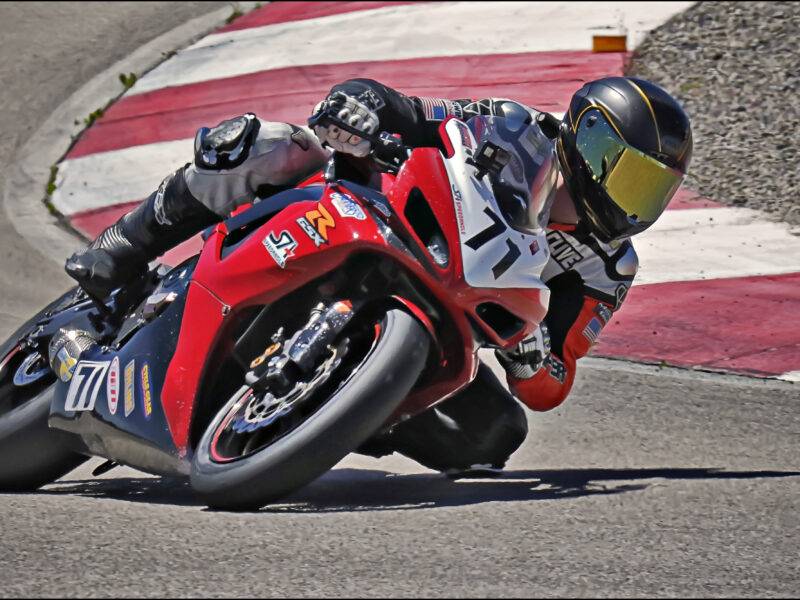
TCS, ESP, ASTC, VDIM, DSTC, ICCS, PSM
… all sounds like acronym soup, but they are all synonymous for some sort of Active Stability Management system in today’s modern vehicles. We refer to these more commonly as “Nannies.”
Compared to cars built prior to the early ‘00s when these types of systems were first being introduced, drivers using more modern cars for HPDE have some new variables to consider before going on track. Advancements in safety technology may reduce accidents on the road, but having spent time instructing in modern cars we’ve learned many of these systems can create unpredictability on track.
Looking back at how these systems have evolved, manufacturers have made it increasingly more difficult to disable Nannies, and engineers have made them more integrated into the vehicles general performance with the added bonus of being more challenging to detect when they are kicking in. More importantly, it’s the understanding of what the technologies are and how they may react on track that we will cover.
DISCLAIMER: Disabling “safety technology” or instructing a student to disable safety technology is not without risk, both in terms of safety and liability. As a driver, research your owners manual for details about the systems equipped on your vehicle or contact the manufacturer for details before deciding to enable/disable any features. All of the following information is for reference only.
Stability Control
Stability control started to appear in mainstream brands in the mid-’90s, and were simple systems that leveraged ABS technology to reduce wheel spin, and maintain vehicle balance. But stability control, in its many shapes and forms has evolved, it has become so much better that people often don’t even realize it is working behind the scenes – the car just feels “normal.” As an example, if you note that the car quickly consumes or overheats its rear brakes, this is usually an indicator that stability control is active – even if you can’t feel it or don’t know when it is engaging. Disabling stability control (usually through a button or switch) can always be a risky proposition. But disabling, or turning down the sensitivity – such as BMW’s M Dynamic Mode (MDM) may be the only way to have your car complete a track day without having to significantly reduce speed or buy new brake pads during the lunch break.
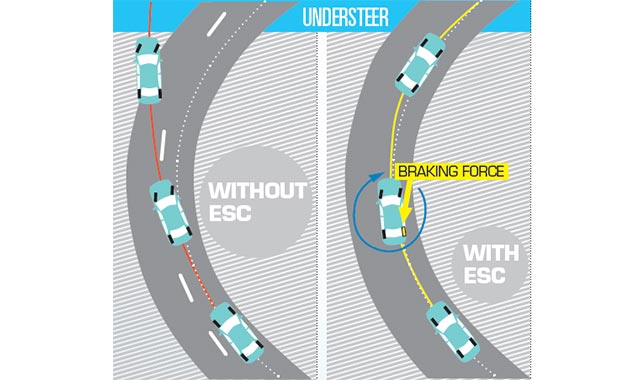
Some stability control systems do have the added quirk of overreacting to banked turns (such as the Carousel on Summit Point’s Shenandoah Circuit, or the Lightbulb on NJMP’s Lightning Circuit). Because of onboard gyroscopes (or potentiometers connected to the suspension) these systems are tricked into thinking the car is rolling over and will go into an “S.O.S mode” attempting to right the vehicle by activating the brakes or cutting throttle intermittently. If you are experiencing frustration with this interference – which is probably ruining your weekend – one solution might be to turn off the system. Before doing so consult with your manual to see if that is even possible. Check to see if “off” means OFF, some of these systems still react even when disabled or in “track mode.” Another option is to not use the banked part of the turn (if possible).
Automatic Braking
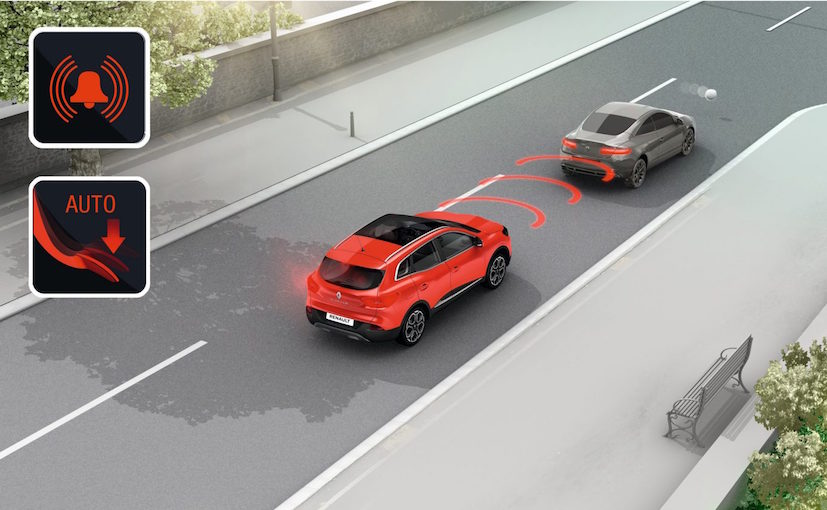
Having personally run across this technology on track, it can be VERY disconcerting. Automatic braking uses either radar style sensors, cameras or a combination of the two to detect closure rates on the vehicles in front of you and apply braking without the driver depressing the pedal. In a braking zone of a straightaway, this “added braking” isn’t the worst thing, but it *can* interfere with your braking zone. The unanticipated weight transfer to the front end will force you to enter the turn more slowly than you planned.
Cornering is where the real fear of this technology lives, Automatic Braking will interfere with attempts to take a run on another car exiting a corner and suddenly apply the brakes. This sudden and unexpected braking will cause the car to pitch and upset the composure of the vehicle. The opposite is also true, as this sudden braking could cause issues for drivers behind you if your vehicle suddenly starts braking in the middle of the corner. However, if by chance, both cars in this scenario have the same system… maybe you will achieve synchronized braking!
Moreover, if you have managed to disable or limit the strength of your stability control but not disable the Automatic Braking, take a look at your controls and see if they are separate systems, requiring an additional on/off toggle – again, consult your owners manual for details.
There are also stories about the Automatic Braking system confusing guardrails for other cars during lane changes, therefore this type of system may react strangely as you move over on the track to avoid another car, or are on a track where walls are close to the track edge – for example: Pocono Raceway, or Watkins Glen International.
Automatic/Adaptive Cruise Control (ACC)

We mention this only because ACC is generally related to Automatic Braking using the same sensors/technology – vehicles with Automatic Braking often have ACC. In short, cruise control should *never* be used (ON) while on track. Admittedly, many folks who drive rather than trailer their track cars forget to turn off their Cruise after the long trip. Make sure you’ve turned off your cruise control once your cross the entry gates to the track!
Lane Departure Warning / Lane Keep Assist
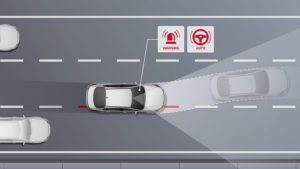
Ignorance is not BLIS (Blind Spot Indication System) — You have probably been on the highway where the car next to you starts to move into your lane and you can tell the driver is completely (or rather, blissfully) unaware of their surroundings. Lane Departure Warning – a system that alerts you when you start to drift into another lane without signalling – and Lane Keep Assist is designed to steer for you to keep you in the lane. Both of these systems can be accident avoiding aids on the highway.
On a race track though, these technologies can be dangerous. If you are on a track that has lane markings (often used for other exercises) or even edge lines, it could trick the system into thinking it’s on the highway and needs to follow the lines. In the absence of lines, some of the technologies follow the car in front of you. As we’ve learned in the HPDE classroom sessions, “never follow the taillights of the car in front of you, because if they go off, you will go off too!” — the same rule applies for this type of system.
The unpredictable nature of these technologies caused one region of BMWCCA to initially ban all cars that were equipped with this technology and/or auto braking (even if it could be disabled). These types of technology really don’t have any place on a race track. With that said, as an Instructor if you are adverse to asking your student to turn it off, at least attempt to find out how it behaves during orientation laps.
Auto-Rev Matching
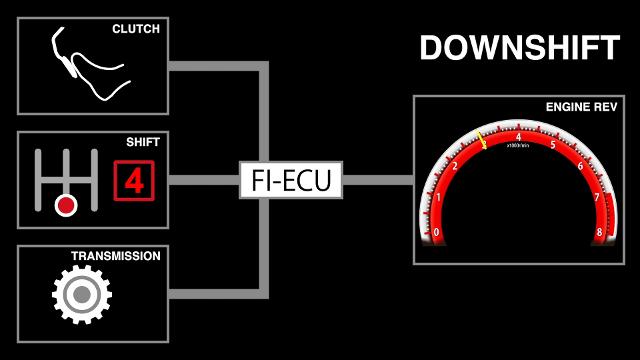
Auto-Rev Matching was introduced in the last 5 years, and was designed as a driver aid to replace having to learn “Heel+Toe” – Ideally this will feature actually limit the likelihood of a spin during downshifts, under braking. But there are two things to consider, if you find the Auto-Rev Match to be “slow” and decide to disable it, you *will* need to revert back to Heel+Toe, but if you leave the feature enabled, it’s important to learn the timing of when and how the Auto-Rev Match occurs: Is activation when the shifter is in travel? Or is it when the clutch is depressed? How long does it take for the rev-match to occur? Does it happen consistently across your rev-range? Can you “outshift” the rev-match? Not understanding how this feature works can cause the rear end to lock up, step out, or force the car into a spin. #savethemanual #learnheeltoe
Stay Vigilant
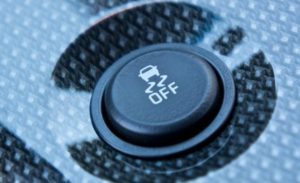
Unfortunately, there are too many vehicles and systems available to cover all of the procedures to turn features on/off and the specifics of each model’s shortcomings. As with any safety technology there are risks for disabling it. As an instructor remember to ask about what “Nannies” are available in your students car. Our recommendation is that you take the first session with ALL NANNIES ENABLED and learn the vehicles dynamics, don’t assume anything, and if you and your student agree that these systems are interfering or causing the car to act strangely it might be worth considering turning some off.
DISCLAIMER: The vehicle owner needs to be the one to disable these systems, not the instructor. The student and instructor must be in agreement that the choice to disable a system is for their safety and that of others.
If you choose to disable, or change the settings, be aware that turning the car off after a session and turning it back on often resets the settings. A full pre-flight check becomes necessary to ensure that things are in the desired state before heading back out on track.
Stay Safe, Have Fun, and never stop Learning!


